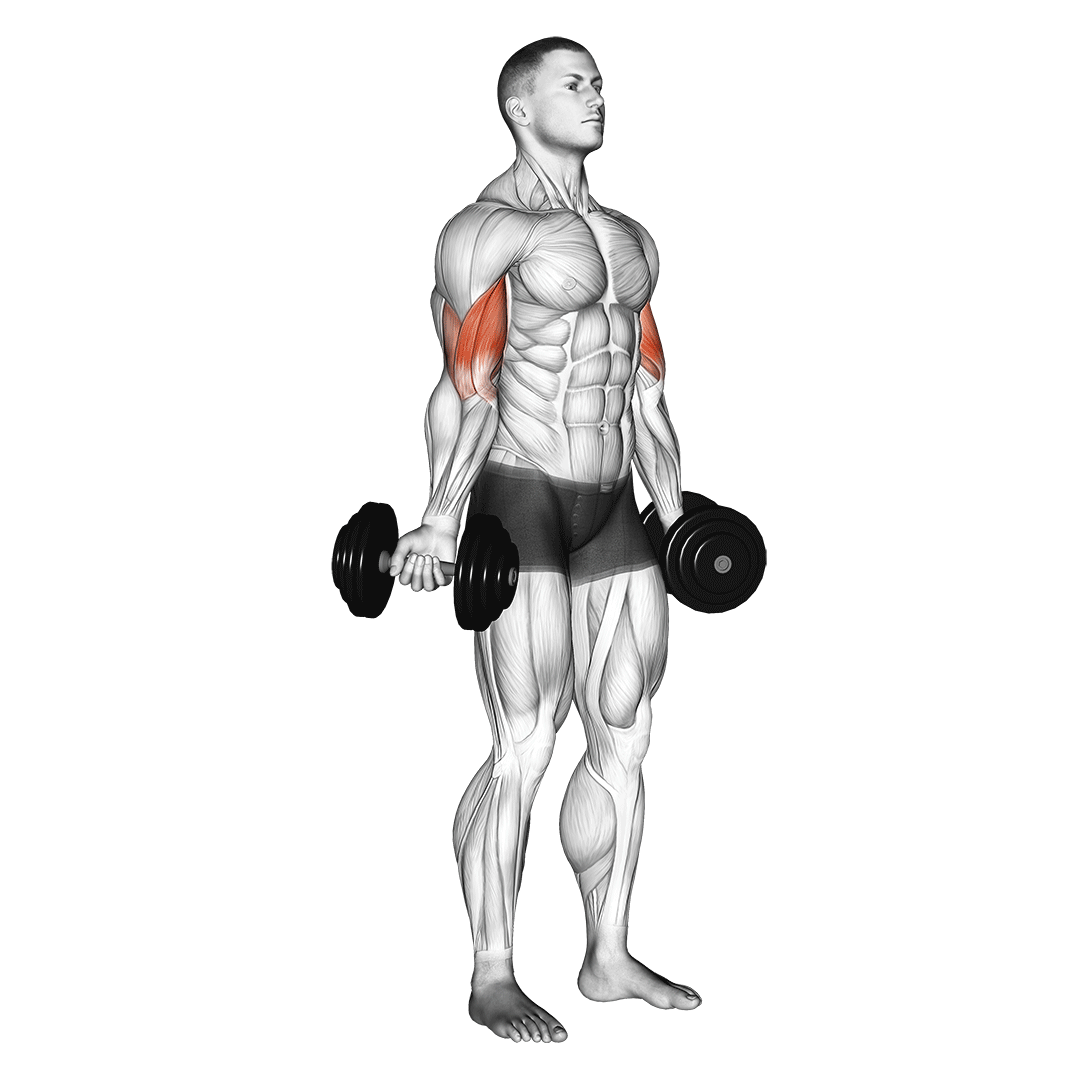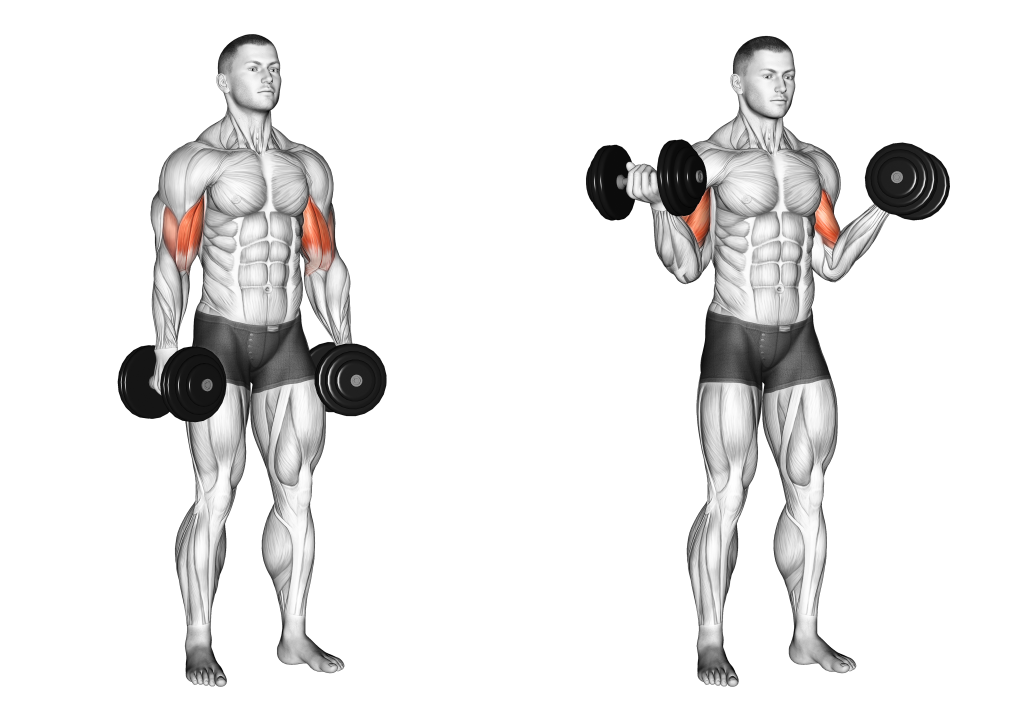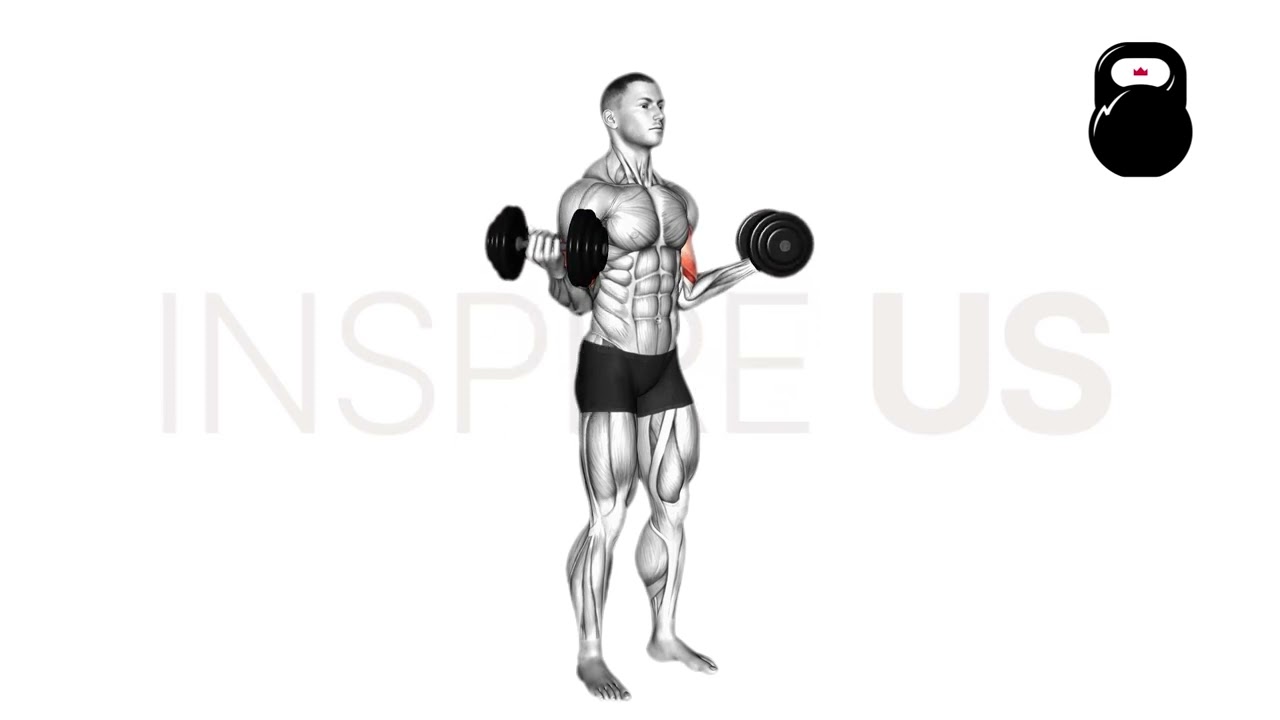Lateral Bicep Curls: Muscles Worked and More
Exactly as its name implies, lateral bicep curls are simply conventional bicep curls done with the hands positioned out to the sides.
Positioning the upper arms in this way allows for greater contraction of the biceps brachii’s short head, improving the specificity of the training session.
Lateral Bicep Curls at a Glance
Equipment Requirements
Dumbbell(s)
Main Muscles Targeted
Biceps Brachii
Difficulty
Easy
Sets, Reps, and Load Recommendations
2-4 Sets of 10-20 Repetitions at a Light Load
Equipment Notes for Lateral Bicep Curls
Lateral bicep curls require only a pair of dumbbells - but may also be performed with kettlebells, weight plates, or any other form of unilateral resistance equipment.
How to Do Lateral Bicep Curls
- To perform a repetition of the lateral bicep curl, the lifter begins by standing upright with a pair of dumbbells gripped at either side, palms facing outwards and elbows pressed flush against the trunk.
Rather than adopting the conventional curl stance, the forearms and hands should be twisted outwards, the elbows almost pointing towards the midline of the body. - Keeping the elbows stationary and the torso upright, the lifter begins the repetition by simply squeezing their biceps and curling the dumbbells upwards - keeping the same lateral angle throughout the movement.
- Once the limit of their range of motion has been reached, the lifter then slowly lowers the weight back downwards, controlling the descent by keeping tension in their biceps as they do so.
- With the elbows now loosely extended and the arm straight, the repetition is complete.
Additional Tips:
Lifters may perform the lateral bicep curl with the elbows detached from the trunk while nonetheless still using the conventional bicep curl movement pattern - defeating the purpose of the exercise.
Unlike with conventional curls where the forearm is essentially drawn towards the bicep itself, the lateral variant should involve the forearm being pulled towards the side of the upper arm, so to speak.
Another stance modification that may help is partially retracting the shoulder blades and rolling the shoulders themselves backwards. This can improve the stability of the upper body and aid in adopting a more lateral arm positioning.
Sets and Reps Recommendation:
Because the lateral bicep curl is somewhat more disadvantageously positioned than its conventional counterparts, lifters will want to reduce how much weight they lift and instead focus on greater volume.
Anywhere between 2-4 sets of 10-20 repetitions each should suffice.
What Muscles Do Lateral Bicep Curls Work?
Lateral bicep curls are an isolation exercise, as they solely target the biceps brachii muscles alone.

In particular is the inner section of the two biceps brachii heads, of which is targeted to a greater degree than the outer head - hence the fact that lateral bicep curls are also occasionally referred to as standing inner bicep curls.
Common Lateral Bicep Curls Mistakes to Avoid
Apart from performing a full warm-up and mobility routine, ensure your technique has none of the following common mistakes.
Poor Range of Motion
With the comparable range of motion shortened by the more lateral position of the arms, achieving as much ROM as possible is all the more important for properly developing the biceps brachii.

Each repetition should start and end with the elbows extended as far as mobility allows, the biceps disengaged. Likewise, the top of the repetition should have the dumbbells nearly touching the sides of the shoulders, the forearms pressed against the bottom of the biceps.
These cues ensure that each repetition completes its range - but will not account for the lifter’s stance itself being sub-optimal for full biceps lengthening/shortening.
Apart from utilizing a full range, lifters should ensure that their elbows remain stationary and that the upper arms are not positioned behind the body where ROM may be unintentionally shortened.
Detaching the Elbows from the Trunk
As is the case with most other variations of bicep curl, the lateral bicep curl should have the elbows kept in place throughout the entire set.
Allowing the elbows to hang freely - or, worse, intentionally moving them so as to cheat the repetition - can draw emphasis away from the biceps and lead to a breakdown in form.
Apart from utilizing the aforementioned tip regarding scapular positioning, lifters can also make use of a type of equipment known as an “arm blaster” to ensure the elbows remain in place throughout each set.
Swinging the Dumbbells/Leaning the Torso
The biceps are a muscle group that respond best to significant spans of time under tension while in a lengthened position.
In order to achieve this, tension in the muscle must be maintained throughout the repetition - swinging the dumbbells with explosive momentum or otherwise moving other parts of the body can negate much of said tension.
For a variation that ensures a far more stable stance, performing seated lateral bicep curls is an excellent option.
Rotating Into a Neutral Grip
Lifters lifting an excessive amount of weight or those who have particularly poor mobility may find themselves transforming the exercise into a hammer curl, rather than a bicep curl.
Using a neutral grip instead shifts the emphasis of the exercise towards the brachioradialis and brachialis muscles, especially with the lateral position of the upper arms.
Although this will nonetheless still target the biceps brachii, optimal contraction of the muscle itself is best achieved by using an underhand grip instead. Those having difficulty maintaining a palms-up orientation throughout the set can try rotating the arms into a somewhat more neutral position.
Who Should Do Lateral Bicep Curls?
The lateral bicep curl is quite safe and is as simple an exercise as they come - meaning that even complete novices to weightlifting can pick up the lateral bicep curl without much issue.
In particular, bodybuilders wishing to further develop the inner head of their biceps brachii will benefit the most, as the majority of curl variations place greater emphasis on the outer head instead.
References
1 Barakat, Christopher, Renato Barroso, Michael Alvarez, Jacob Rauch, Nicholas Miller, Anton Bou-Sliman, and Eduardo O. De Souza. 2019. "The Effects of Varying Glenohumeral Joint Angle on Acute Volume Load, Muscle Activation, Swelling, and Echo-Intensity on the Biceps Brachii in Resistance-Trained Individuals" Sports 7, no. 9: 204. https://doi.org/10.3390/sports7090204

